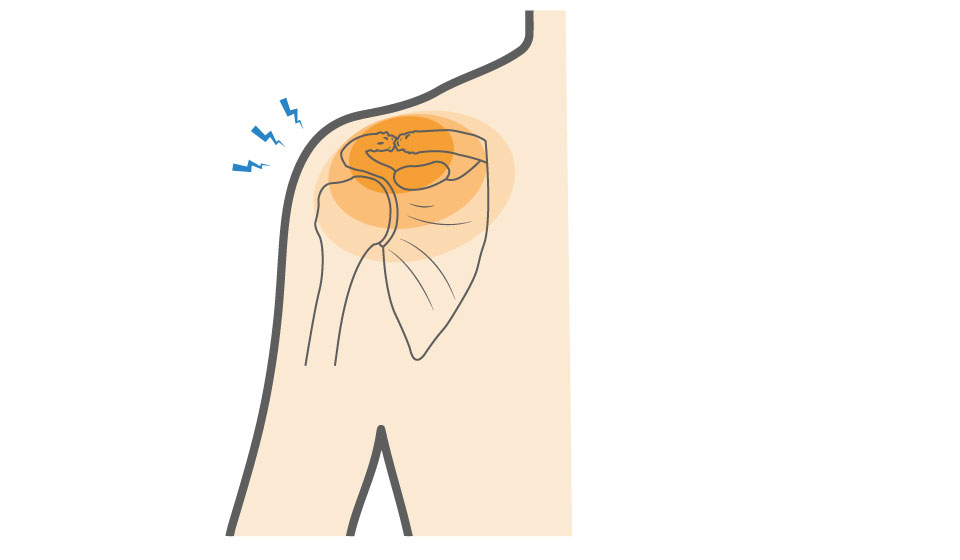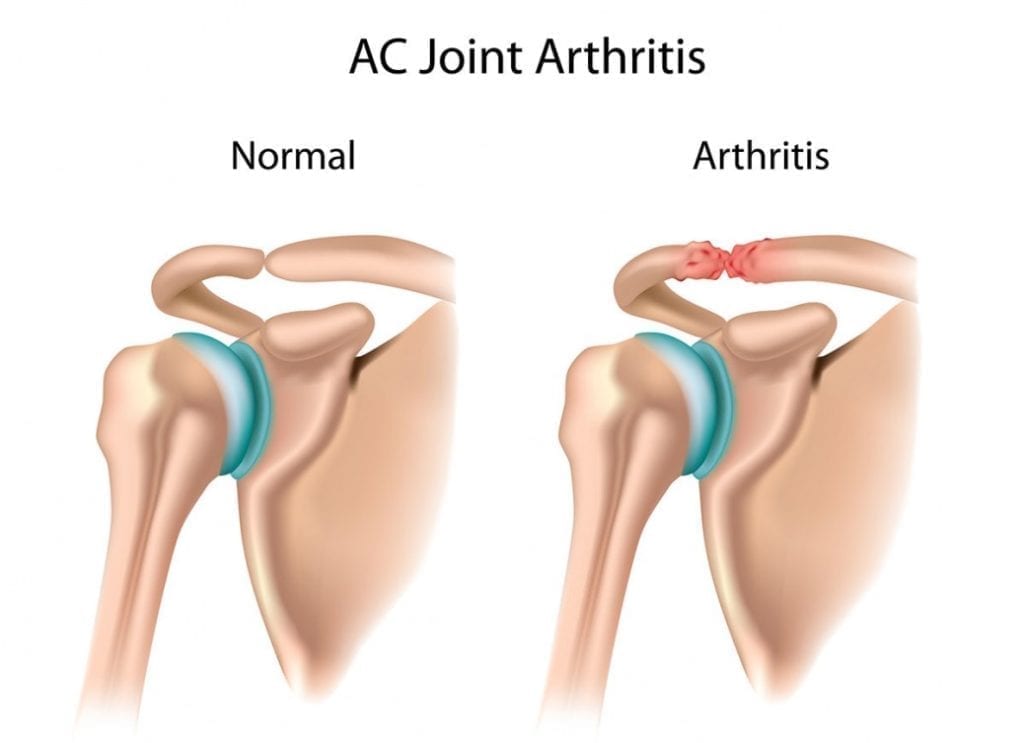The acromioclavicular (AC) joint is a joint in the shoulder that forms where the clavicle bone meets the highest part of the scapula (shoulder blade) called the acromion. The AC joint allows you to raise your arm over your head and move your arm across your body. Arthritis is a general term given to joint disease that leads to inflammation, pain, and stiffness. When arthritis affects the AC joint, this is called acromioclavicular arthritis. Weightlifters often get a related condition called “weightlifter’s shoulder.” The weightlifter’s shoulder is osteolysis (breakdown of bone) of the distal (the end farthest from the neck) portion of the collarbone.
The AC joint degeneration often manifests as stiffness and pain during upper body movement, particularly at the shoulder tip. As a result, shoulder tip arthritis can significantly impact daily function and athletic performance.



